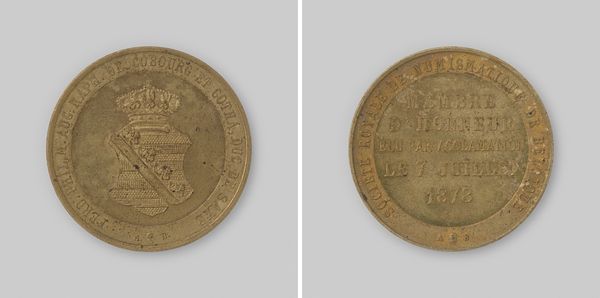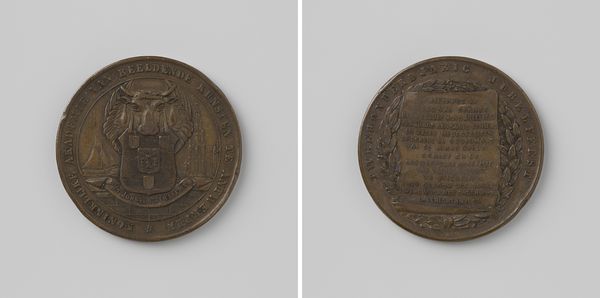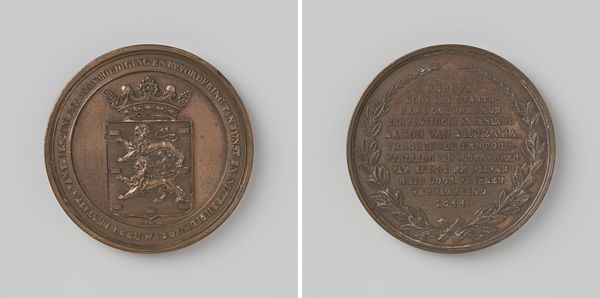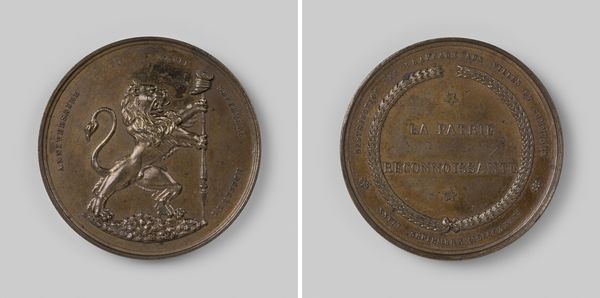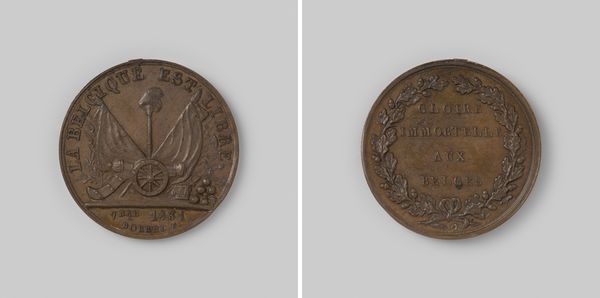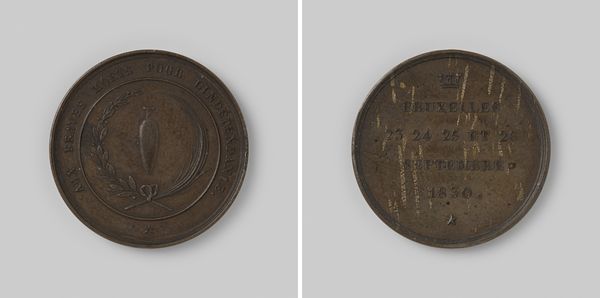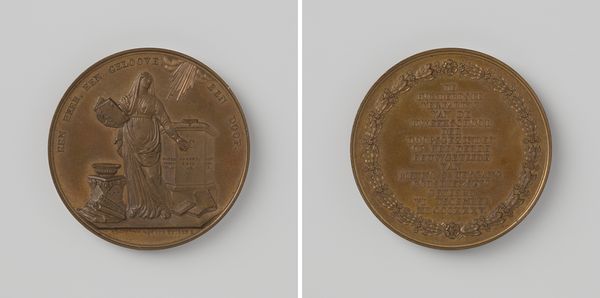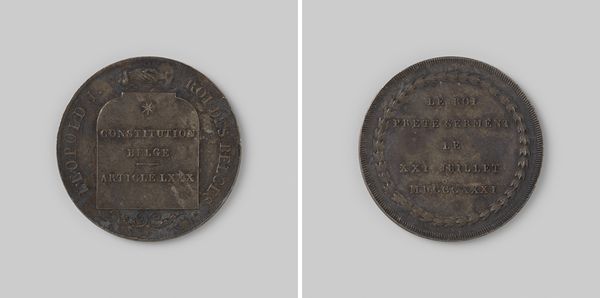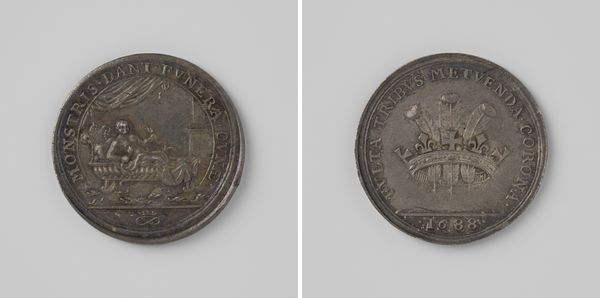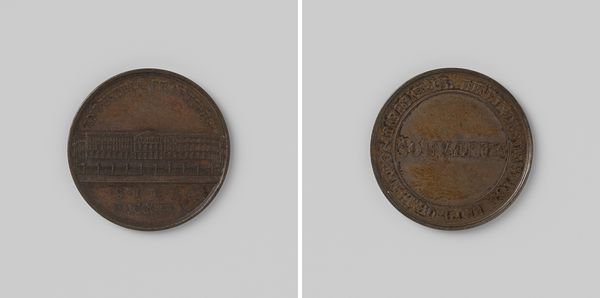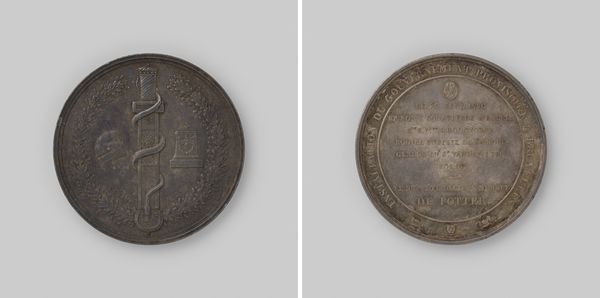
metal, relief, sculpture
#
neoclacissism
#
metal
#
sculpture
#
relief
#
sculpture
Dimensions: diameter 3.2 cm, weight 13.62 gr
Copyright: Rijks Museum: Open Domain
Curator: It looks rather serious. All that brown and those terse inscriptions suggest solemnity. Editor: Indeed. Today we’re looking at "Eerstesteenlegging van het Akademiegebouw te Gent 1819," a metal relief created by Joseph-Pierre Braemt in 1819 to commemorate the laying of the foundation stone for the Ghent Academy building. Curator: The Neoclassical influence is obvious in the precision of line and detail. Notice the controlled relief, almost flattened, and the inscription surrounded by the laurel wreath on one side – signs of a desire for order and rationality. The other side feels more overtly celebratory, with a bold coat of arms. Editor: That coat of arms represents Ghent itself. This medal wasn't merely about marking an architectural milestone; it was about celebrating the city's identity, solidifying its cultural aspirations during a politically turbulent period following the Napoleonic era. This structure had political meaning. The academy would represent social stability at a moment when it was absent in most parts of society. Curator: Right, the building as a symbol of institutional strength. It's remarkable how a relatively small object conveys so much weighty historical context. Speaking of form, observe how Braemt used contrasting textures, the matte finish around the inscription versus the subtly burnished sheen of the coat of arms to draw the eye. Editor: That contrast isn’t just formal—it represents the complex layers of society at the time. The medal served as propaganda for the academy; those burnished details reinforced social value. Each formal choice became a strategic piece of visual rhetoric to cement Ghent’s position on a political map, suggesting a sophisticated future. Curator: The visual language reflects the desire to assert authority in a period of unrest. Looking at it this way, Braemt did not make the artifact; instead, he wrote political commentary. Editor: In the end, beyond its formal qualities and historical significance, it makes you ponder who held this artifact and what memories it stirred in its keepers. The value may depend more on a user. Curator: Right. As always, meaning emerges from the union between material and reception, I suppose.
Comments
No comments
Be the first to comment and join the conversation on the ultimate creative platform.
